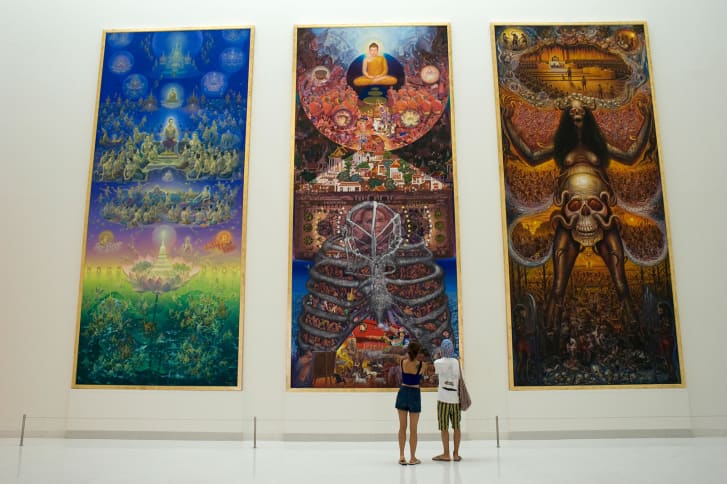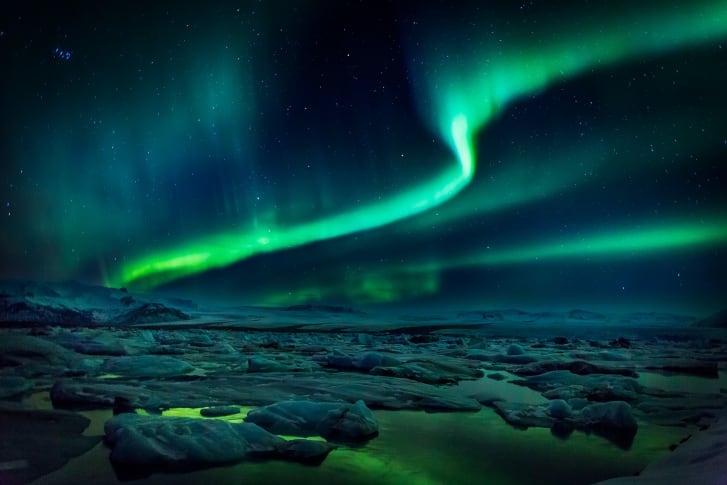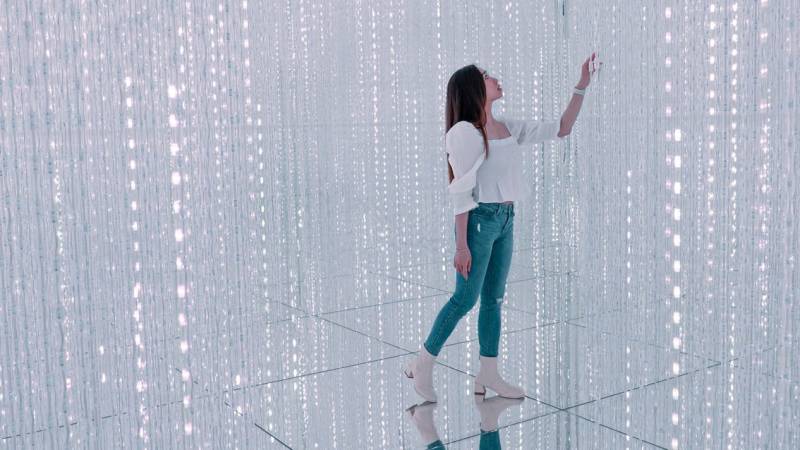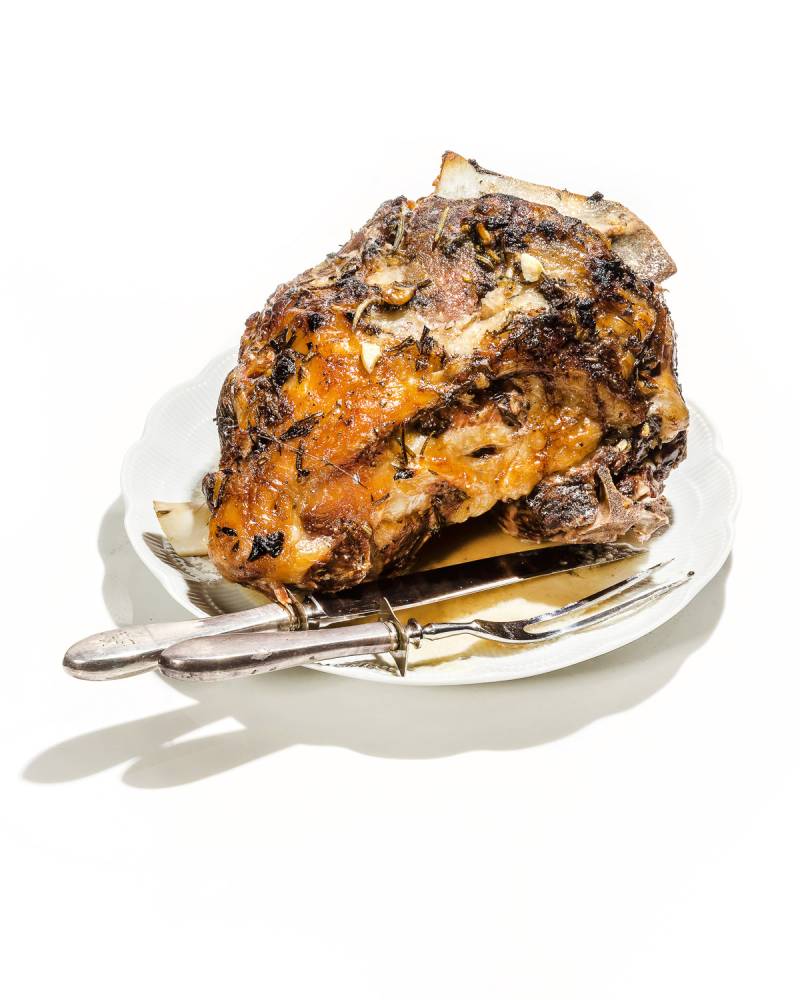It may be a sunset, a stirring orchestral number, or a striking painting — whatever gives you goosebumps or makes you shed a tear. Experts believe that consistently seeking out these awe-inspiring experiences could lead to a significantly happier and healthier life. People find awe in nature, religion, and music, as well as through visual art or architecture. We particularly feel it when we "encounter things that are vast or beyond our frame of reference, and that is inexplicable and mysterious," Dr. Dacher Keltner told CNN in a video interview. "And then those kinds of experiences initiate wonder and contemplation and imagination." Keltner has been studying human emotion for decades. He is also a co-founder and director of UC Berkeley's Greater Good Science Center, a research institute that probes questions about our social and emotional well-being. His latest book, "Awe: The New Science of Everyday Wonder and How It Can Transform Your Life," explores the social, physical, and mental benefits of this powerful emotion.
Read Also: Can young Nigerians stay afloat in a struggling economy?
Keltner approaches awe, in part, from an anthropological perspective, exploring how this emotion shapes our social fabric. "As a species, we are very interdependent," he said. "But the central challenge to healthy social networks, which is vital to our health, is unbridled self-interest." The power of awe, he argues, is that it motivates us to see beyond our own desires. It "quiets the voice of the self" and, consequently, "makes you share things and collaborate with other people," Keltner said. Recently, a decades-long Harvard study found a strong link between close interpersonal connections and our overall happiness and health.

But is finding wonder through art as simple as looking at a beautiful painting? Keltner says the answer is complex. In 2017, he co-authored a study mapping the self-reported emotions of over 850 participants as they watched more than 2,000 short videos. The researchers cataloged 27 emotions, some of which were more likely to co-occur and so were considered related. The study found that awe was experienced as a distinct emotion, different from beauty, although it was often reported alongside "admiration" and "aesthetic appreciation." Keltner concludes, therefore, that it's important — albeit difficult — to different stimuli that are simply beautiful from those that tend to evoke awe.
He says to think of beauty as something familiar. When we look at art that fits our understanding of the world, such as bucolic landscape paintings of rolling hills, we recognize that we are seeing beauty. But Keltner argues that awe-inspiring art happens "when we violate expectations, when things are out of place or turned upside down." In contrast to beauty, awe is overwhelming and mysterious. Shock value isn't enough, though. In that same 2017 study, awe rarely occurred alongside feelings of disgust, horror, fear or anxiety. Fundamentally, what separates wonder from shock is that the former invites us to learn and grow.

All this nuance means it can sometimes be hard to recognize feelings of awe when they arise. So Keltner suggests taking careful note of various stimuli, like paintings, music, or natural phenomena, and analyzing how they make you feel. "Do you feel quiet, do you feel humble?" he said. "All of our studies show that your sense of self recedes to the background of consciousness as you're absorbing this perceptual experience. The "small self" is probably one of the defining elements of awe."
The art of Wonder
Evoking awe poses a challenge to artists because "it's one thing to astonish people and another to aesthetically point to new ideas," said Keltner. Artist Seffa Klein sees science and art existing in harmony with one another. While one is seen as objective and the other highly subjective, they're "very similar processes," she said. "They're ways for people to communicate information." In her new exhibition "WEBs: Where Everything Belongs," which opened in New York on Wednesday, Klein uses materials including molten bismuth (an element rarer than gold), woven glass, plaster, and acrylics as she invites viewers to ask metaphysical questions about human consciousness and our place in the universe. She hopes audiences come away from her mixed-media works with a sense of meaning and a recognition that "everything is inextricably bound, not only on the particle scale but on the social scale."
Through her art, she tries to communicate her own awe to audiences. To do so, she plays with scale, both in the artistic and scientific sense. Drawing from the vast planetary scale of astronomy and astrophysics as well as from the microscopic dimensions of quantum mechanics, Klein strives to create a space where viewers can arrive at their own moments of wonder.
Her work incorporates radiating lines and recurring spirals, eliciting a sense of motion and drawing the viewer in. Intensely bright beams of color emanate like lasers from the reflective centers of the canvases like lightning bolts of inspiration. From farther away, audiences can appreciate the dynamism of the abstract starbursts but, drawing closer, they can admire the minuscule specks of metal that look like cells underneath a microscope. "Awe is seeing that you are exceeded by something else and finding peace and beauty and admiration in that fact," she said. "It's a realization that, once you get past a certain scale, your being as you know it, stops existing." Like Keltner's notion of the small self, Klein calls this experience a metaphorical "ego death."
Instead of existential dread, Klein finds comfort in that abstraction and mystery. When people realize the limits of their understanding, she said, "they can feel like they belong to a greater sense of order in the world." Creativity, curiosity, and civic engagement Research shows that awe and wonder improve positive social behavior by helping people feel as though they are a part of something bigger than themselves. One study examined people's actions after spending time in a grove of giant evergreen trees. Participants who spent one minute looking up at the trees demonstrated an increased tendency to help others. Another study found that consuming and creating art, whether that's music, visual art, or literature, correlates with increased empathy and civic engagement. There are a host of other benefits that make awe, as Keltner puts it, "a pretty good state to be in." He and other scientists have found that awe was among the positive emotions associated with less inflammation in the body, a major trigger for chronic disease. Awe has also been shown to calm our sympathetic nervous system, which activates when we feel stressed, increasing our heart rate and blood pressure. There may be mental benefits to being awe-struck, too — specifically a reduction in stress and anxiety. Keltner says that people who experience wonder tend to find a greater sense of well-being and purpose in their lives and this, in turn, makes them less self-critical. It is also associated with more creativity and curiosity.
In 2021, Keltner and other researchers partnered with Google Arts and Culture to map the emotions that users reported when looking at 1,500 different artworks online. Of those, participants reported that some 60 artworks made them feel some level of awe. Other words they chose to describe these works were "mysterious," "striking," "cosmic," "spiritual," and "intimate connectedness." One way to tune into your own sense of awe, Keltner suggests, is to explore these pieces and ask yourself what emotions they elicit in you. Most importantly, he urges people to slow down and be receptive to their surroundings. "Look for things that challenge your scale, both small and vast," he said — anything from a pattern created by flowers near the sidewalk to the silhouette of your city's skyline on your commute. He promises you'll thank yourself later.




